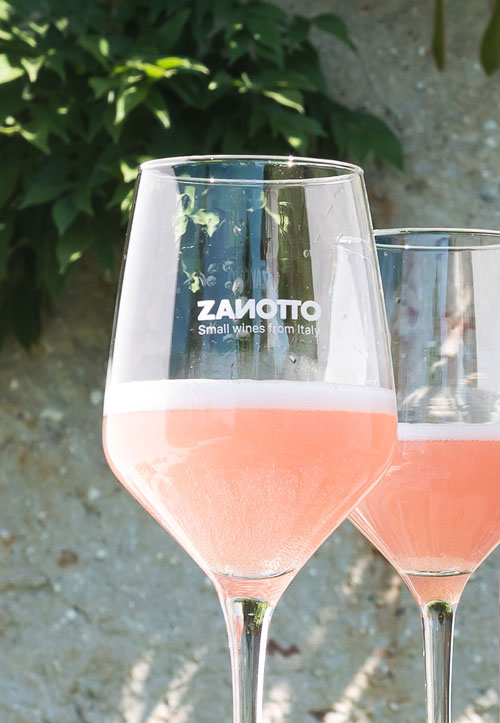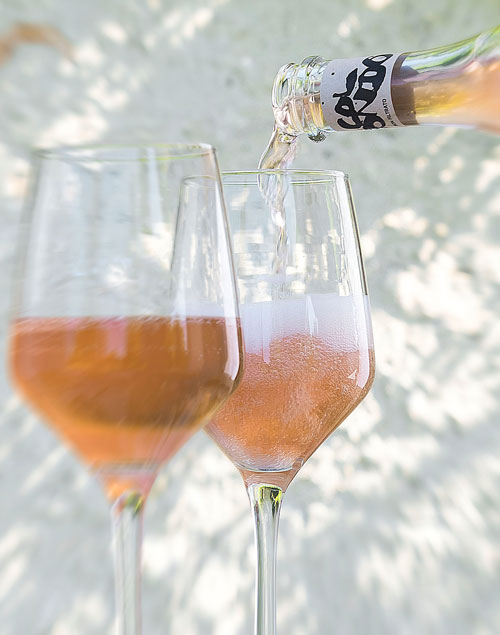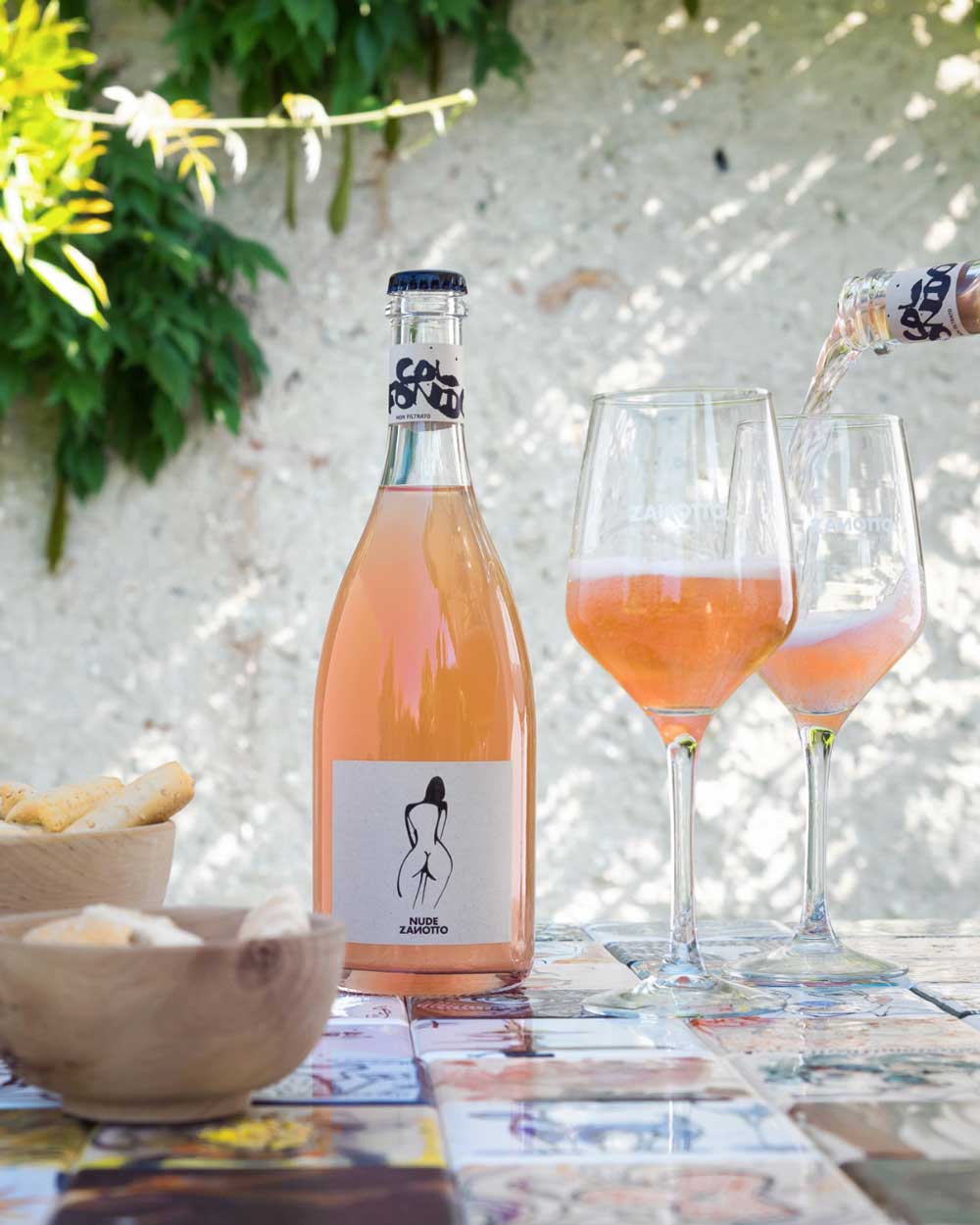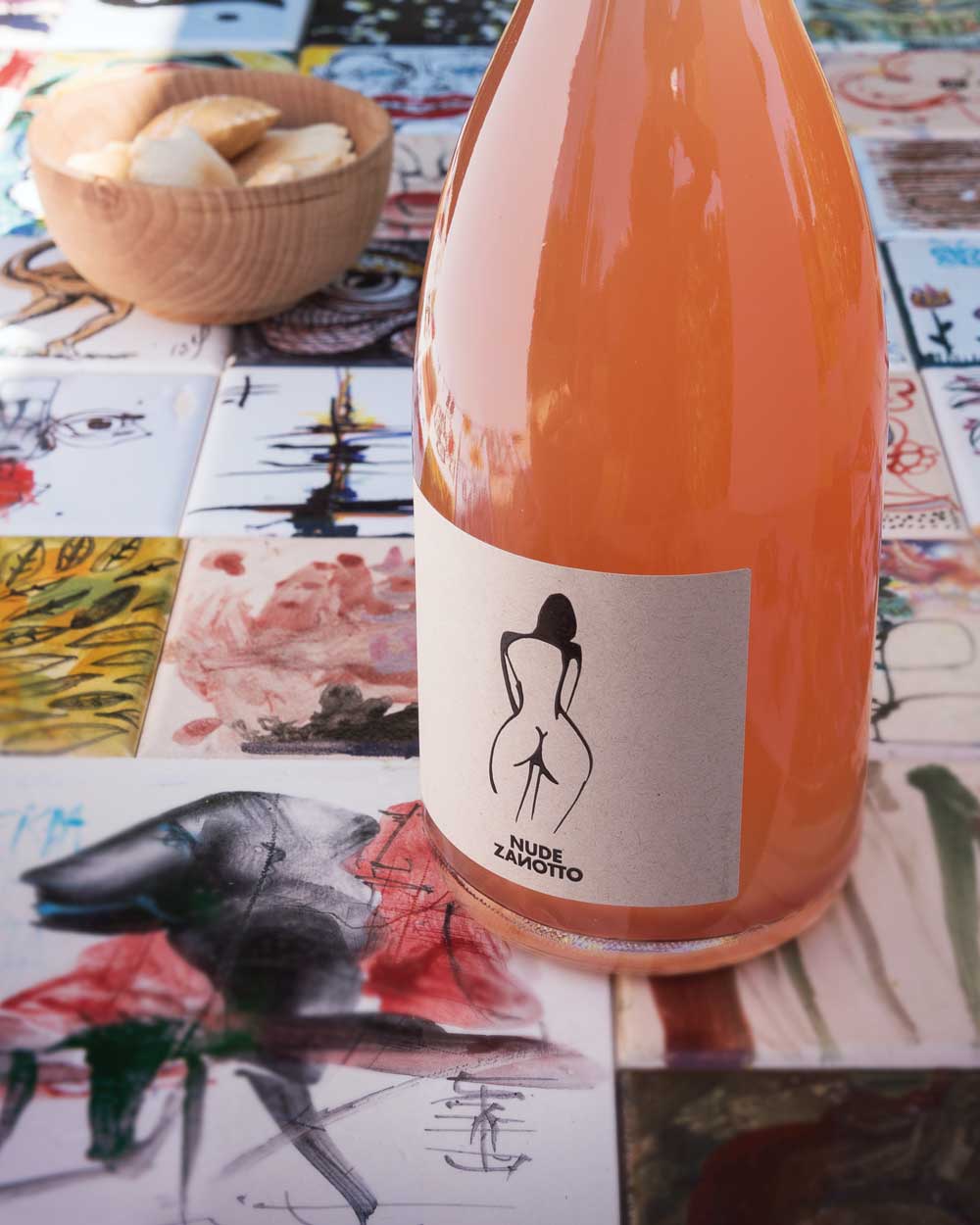Non sono presenti prodotti nel carrello.
Nude
Rosé lightly-sparkling wine
Second fermentation in the bottle
Ancestral method, unfiltered
11% vol – 750 ml
This ancestral rosé wine is made from 85% Glera and 15% Raboso grapes. Refermented in the bottle and left unfiltered, it is elegant, flavorful, and well-structured. The flavor evokes freshly pressed grapes. On the palate, it offers a persistent and balanced taste with notes of ripe fruit.
Enjoy it clear, leaving the yeasts settled at the bottom, or by gently turning the bottle to cloud the wine and enhance the intensity of the aromas.
Serving Temperature: 8° – 9° C
Unfiltered Wines by Riccardo Zanotto
To learn more
Unfiltered Rosés: Blends That Speak of Terroir
A wave of bubbles is captivating the most curious glasses, bringing something different from the usual fizz. In the trendy haunts of Shoreditch or Milan’s chic wine bars, wines that feel like a step back in time are popping up: ancestral, hazy, unapologetically honest. These are the “col fondo” sparklers—natural, unfiltered, and bursting with character rooted in tradition. Leading this charge? Blended grapes, turning each sip into a unique story.
It’s not just the hype around unfiltered pét-nat rosés making waves. This is a deeper rediscovery: the craft of blending different grape varieties to create complex, lively wines far removed from industrial norms. Fermentation finishes in the bottle, trapping vibrant bubbles and leaving behind a sediment that’s almost a maker’s mark. No filters, no artificial meddling—just wine evolving, raw and real.
This approach strikes a chord with those craving a direct connection to the terroir, a genuine expression of the vineyard. No wonder “col fondo” wines are winning over natural wine lovers. With hues shifting from pale pink to orange-tinged, a delicate sparkle, and the choice to stir the sediment or leave it at the bottom, these wines carry an irresistible charm. Take Zanotto’s Nude Rosato col Fondo: 85% Glera and 15% Raboso, aged five months on its lees, unfiltered. It bursts with fresh fruit notes, a gentle fizz, and an elegance that hooks you without trying too hard.
Cities like London and Milan amplify this trend, but its spark comes from somewhere else: a yearning for artisanal practices and wines with a story to tell. You’ll spot them lighting up refined aperitifs or casual get-togethers, often paired with dishes that share the same love for local craft. They’re not yet mainstream, but their fanbase is growing among those seeking something beyond the ordinary—a sip that doesn’t just quench but stirs the senses.
These wines are more than a passing fad; they’re a quiet rebellion. They fuel chatter among enthusiasts, raise glasses, and remind us that great wine isn’t just about flavor—it’s about identity. Here’s to the land, its grapes, and the hands that let them sing.

To learn more
Three Ways to Savor the Essence of “Col Fondo” Rosé
“Nude” is more than just wine; it’s an experience that invites discovery. Being a “Col Fondo,” its unique character lies in the lees that remain in the bottle after refermentation, offering diverse tasting possibilities.
1. Purity and Finesse: The Elegance of Clear Rosé
For those who appreciate elegance and clarity, we recommend decanting “Nude.” Gently pour the wine into a carafe, avoiding transferring the last 20-30 ml containing most of the lees. This will yield a clear and bright rosé with delicate aromas of white peach and wildflowers. Ideal as a refined aperitif or paired with light dishes like sushi and seafood.
2. Vivacity and Depth: The Intensity of Velvety Rosé
For a more intense and engaging experience, we suggest gently shaking the bottle before pouring. This will mix the lees with the wine, giving it a light cloudiness and enriching it with aromas of bread crust and red fruits. On the palate, the lively bubbles and enhanced aromatic complexity will make the tasting even more rewarding. Perfect for accompanying tapas, artisanal cheeses, and fusion cuisine.
3. Gradual Exploration: A Journey in the Glass
“Nude” offers a dynamic experience. By pouring slowly, the first glasses will be clearer, revealing the rosé’s freshness and finesse. As you continue, the lees deposited at the bottom will gradually mix, enriching the wine with complexity and depth. The last glasses, more cloudy, will offer an explosion of aromas and a fuller texture. This allows you to experience different nuances of flavor and texture within the same bottle, a true sensory journey in the glass.




